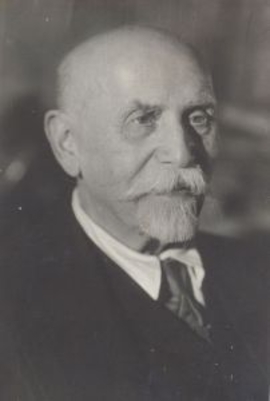Novosadsky Nickolay (1859–1941) – specialist in classical philology, epigraphy and classical religion.
After classical gymnasium in Izyaslav, he enrolled at the St. Petersburg Historical and Philological Institute and graduated from it in 1883. In 1883-1884, he worked as teacher of classical languages at the male gymnasium in Taganrog.
In 1884-1886, he was sent for two years to Greece to prepare himself for a position of Professor; then he taught classical languages in St. Petersburg – at the private Widemann’s Gymnasium (1886-1888), and at the Historical and Philological Institute (1887-1888).
In 1887, he got his Master degree in Greek literature at the St. Petersburg University for his thesis ‘Eleusinian Mysteries’. In 1888-1906, he was Professor of Greek literature at the University of Warsaw; in 1889-1895 – Secretary, and in 1905-1906 – Dean of the Historical and Philological Faculty. He used his chance to visit nearby intellectual centers of Europe and to work there in libraries and museums. In 1901, he defended his Doctor thesis in Greek literature ‘Orphic Hymns’ at the Novorossisky University (Odessa).
When retired, he went to Moscow; in 1907-1922, he was Professor of the Chair of Epigraphic at the Moscow Archeological institute; in 1909-1929, he was also Professor of Greek literature at the Historical and Philological Faculty of the Moscow University. When the Historical Faculty was structured there in 1934, he became Professor of the Chair of Ancient History; and from 1937 till the end of his life – Head of the Chair of Ancient Languages. Doctor in Philology (1935).
In 1912, he was elected as Honourary Member of the Moscow Society on Studying Ancient Monuments; in 1927, he worked in the Commission on the History of knowledge at the Ac. of Sc. of the U.S.S.R. He was member of several research societies. In 1919-1934, he also worked at the Lenin State Library. He got the Order of Stanislaw of the 1 degree, and the Order ‘Sign of Honour’
In the field of religious studies, N. was known as a specialist in periphery less-studied cults and religious phenomena. His interest to epigraphy allowed him to collect and studied a great number of sources on those cults.

